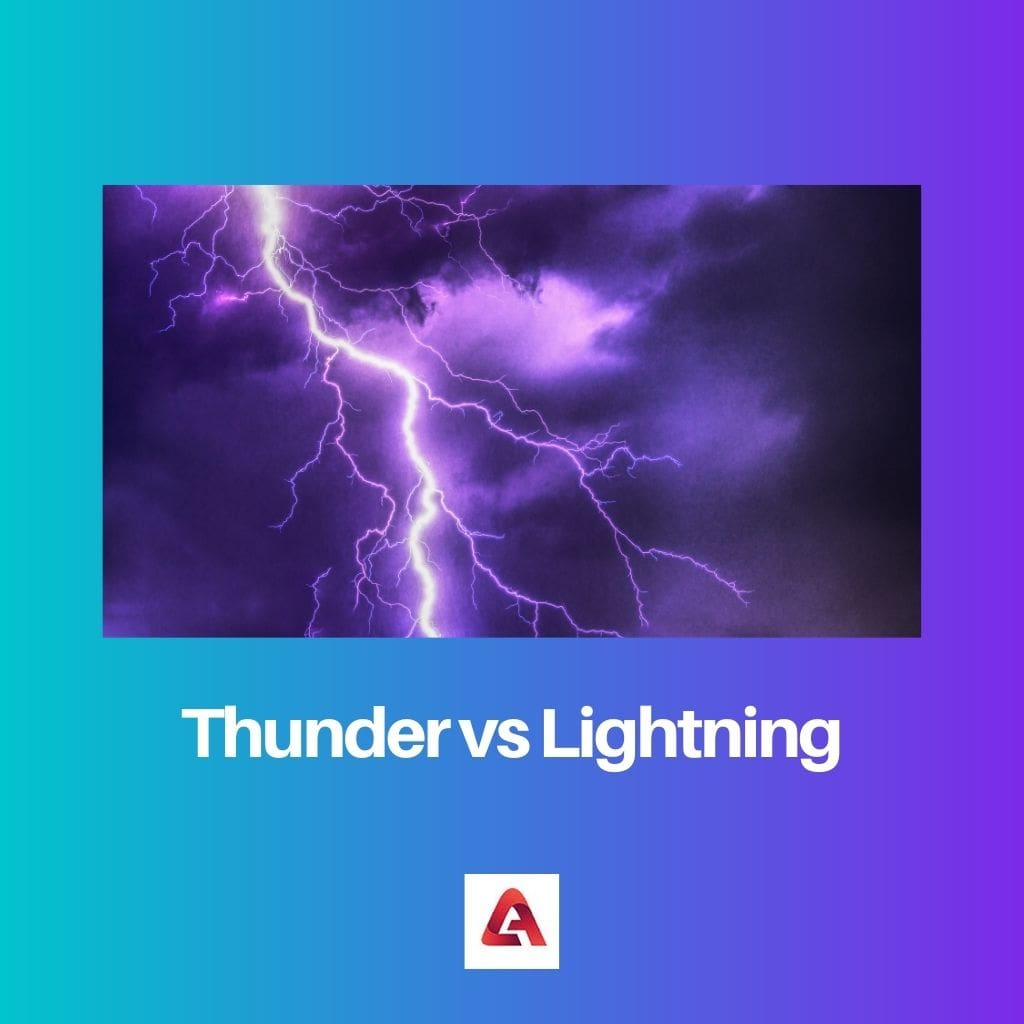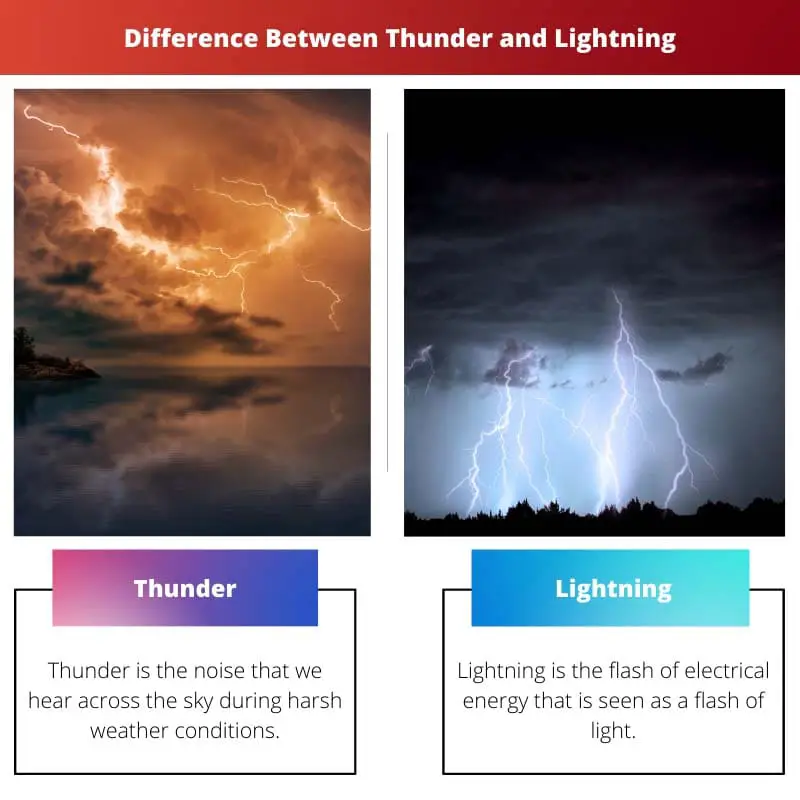Thunder and lightning are two terms that are used interchangeably in the context of weather conditions. These two terms are part of the larger concept known as thunderstorms.
When there are harsh weather conditions, we hear sounds and light in the sky, followed by heavy rains and stormy winds. This phenomenon of sound and light during extreme weather conditions is known as a thunderstorm.
Key Takeaways
- Lightning is an electrostatic discharge during a thunderstorm, resulting from the buildup of electrical energy in the atmosphere.
- Thunder is the audible sound produced by the rapid expansion and contraction of air surrounding a lightning bolt due to the intense heat generated by the electrical discharge.
- Although thunder and lightning are closely related, they are distinct phenomena: lightning is the visible discharge of electricity, while thunder is the sound created by the shockwave associated with the discharge.
Thunder vs Lightning
Thunder is a term used to describe the sound produced by the rapid expansion of air due to the heat generated by a lightning bolt. Lightning, is a term used to describe an electrical discharge that occurs between clouds or between the clouds and the ground, producing a bright flash of light.

Thunder is the loud noise produced by the collision of clouds in the sky that can be heard across the sky. The sound is the rolling noise that is distinct and recognizable at times.
Lightning is the flash of electricity seen across the sky and can result in colossal destruction.
Comparison Table
| Parameters of comparison | Thunder | Lightning |
|---|---|---|
| Definition | Thunder is the noise we hear across the sky during harsh weather conditions. | Lightning is the flash of electrical energy seen as a flash of light. |
| Phenomena | Thunder is the sound produced when cumulonimbus clouds collide with each other. | Lightning is produced by the light energy given after the collision of particles of clouds. |
| Energy | Thunder is heard because it is the sound energy produced in a collision. | Lightning is seen because it is the light energy produced when water and ice particles collide. |
| Speed | The sound of thunder is heard after the light because it has a slower speed than that of light. | Light travels at a faster speed therefore, we see lightning first than sound. |
| Repercussions | Thunder can sometimes bring strong winds, heavy rains, and loud noise and disturbances. | Lightning can be very destructive at times. It strikes the tall building, which can lead to the destruction of the building. |
What is Thunder?
Thunder is the loud noise and the disturbances we hear across the sky during a thunderstorm. Usually, these loud sounds or thunder are caused by the upward movement of the moist and warm air.
As this air moves up, it cools down and is compressed to form cumulonimbus clouds. The ice droplets, water, and other particles that are constituents of the clouds collide with each other to produce the sound that we hear.
Thunder is the sound energy produced by the collision of clouds and other particles in the sky. Thunder can sometimes result in loud noise followed by heavy rains and strong winds.
The fast expansion of gases causes thunder, which causes rumbling and creaking sounds most of the time.

What is Lightning?
Lightning is the flash of light we see across the sky during thunderstorms. It is a phenomenon where light energy is produced by the collision of the cumulonimbus clouds and other particles, such as water droplets and dust, in the sky.
Lightning can also turn into a severe natural disaster when it occurs in extreme forms.
Light travels at a very high speed; therefore, we constantly witness lightning before the thunder is heard during a thunderstorm. The flash of electricity has an excruciating temperature ranging up to 54000 degrees Fahrenheit.
It can result in the heavy destruction of tall buildings, towers, objects, etc. It happens because lightning has a high speed and takes its fastest to the ground.

Main Differences Between Thunder and Lightning
- Lightning is the sudden flash of electricity and light we witness across the sky during a thunderstorm. In contrast, Thunder is the loud noise and rumbling disturbances during harsh weather conditions.
- Lightning is the form of electric energy we see in the light, whereas thunder is the form of sound energy we witness in loud noises.
- Thunder can result in heavy rains and strong winds later, but lighting causes more destruction and damage.
- Usually, we see lightning before the sound of thunder because light travels at a faster speed as compared to sound. The average speed of lightning is 140,000 miles per hour.
- The temperature of the light produced during lightning is severely high, which has the potential to cause damage on a large scale, whereas the sound proud by thunder is not destructive most of the time.




